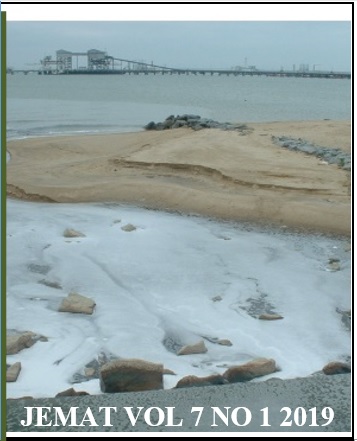Biodegradation of Hydrocarbon Sludge by Pseudomonas sp. Strain UPM-KV
DOI:
https://doi.org/10.54987/jemat.v7i1.473Keywords:
hydrocarbon-utilizing Pseudomonas sp. hydrocarbon sludge heavy metalsAbstract
A hydrocarbon-utilizing microorganism isolated locally was characterized and investigated. This study involved standard biochemical tests and investigation of the bacterial growth based on the uptake of carbon and nitrogen source, temperature and optimum pH growth. The bacterium was found to be a Gram-negative rod, non-motile property with unique property to degrade hydrocarbon sludge. By using diesel as sole carbon source the bacterium was found to be an aerobe as further proven by the oxidase testing. The optimum conditions for the growth was found to be at 30 °C and pH 6.8 with optimum diesel concentration, 1% (v/v). The bacterium ideally used ammonium sulfate as source of nitrogen and was identified as Pseudomonas sp. strain UPM-KV. The ability of this bacterium to efficiently grow on hydrocarbon sludge makes the bacterium an important tool for bioremediation of this toxic sludge that contains high concentration of heavy metals.
Downloads
Published
How to Cite
Issue
Section
License
Authors who publish with this journal agree to the following terms:
- Authors retain copyright and grant the journal right of first publication with the work simultaneously licensed under a Creative Commons Attribution License (http://creativecommons.org/licenses/by/4.0) that allows others to share the work with an acknowledgement of the work's authorship and initial publication in this journal.
- Authors are able to enter into separate, additional contractual arrangements for the non-exclusive distribution of the journal's published version of the work (e.g., post it to an institutional repository or publish it in a book), with an acknowledgement of its initial publication in this journal.
- Authors are permitted and encouraged to post their work online (e.g., in institutional repositories or on their website) prior to and during the submission process, as it can lead to productive exchanges, as well as earlier and greater citation of published work (See The Effect of Open Access).


